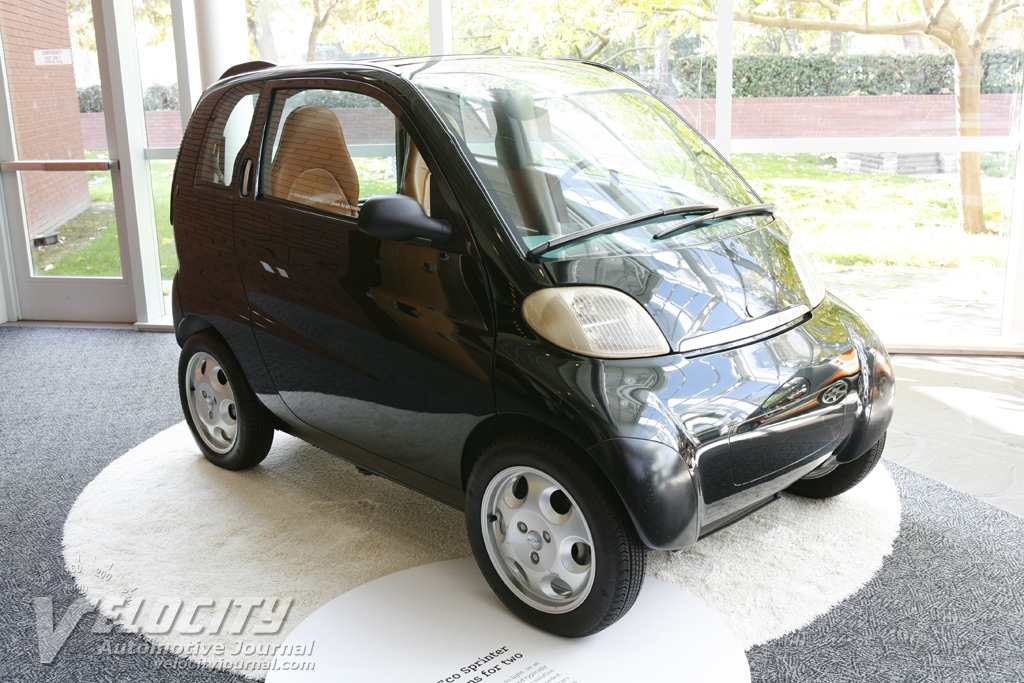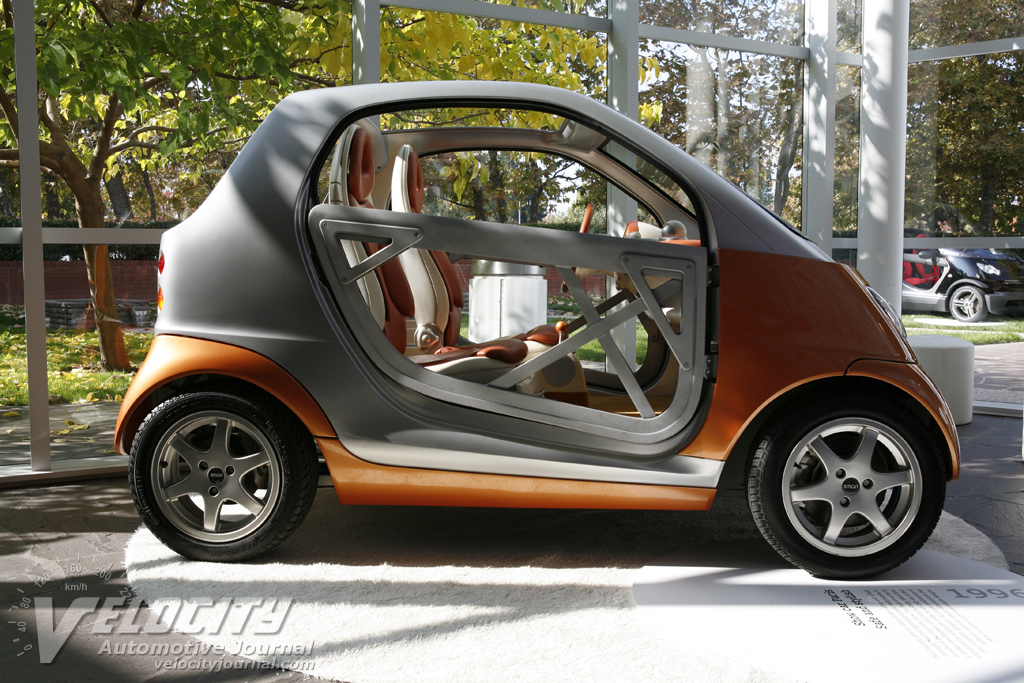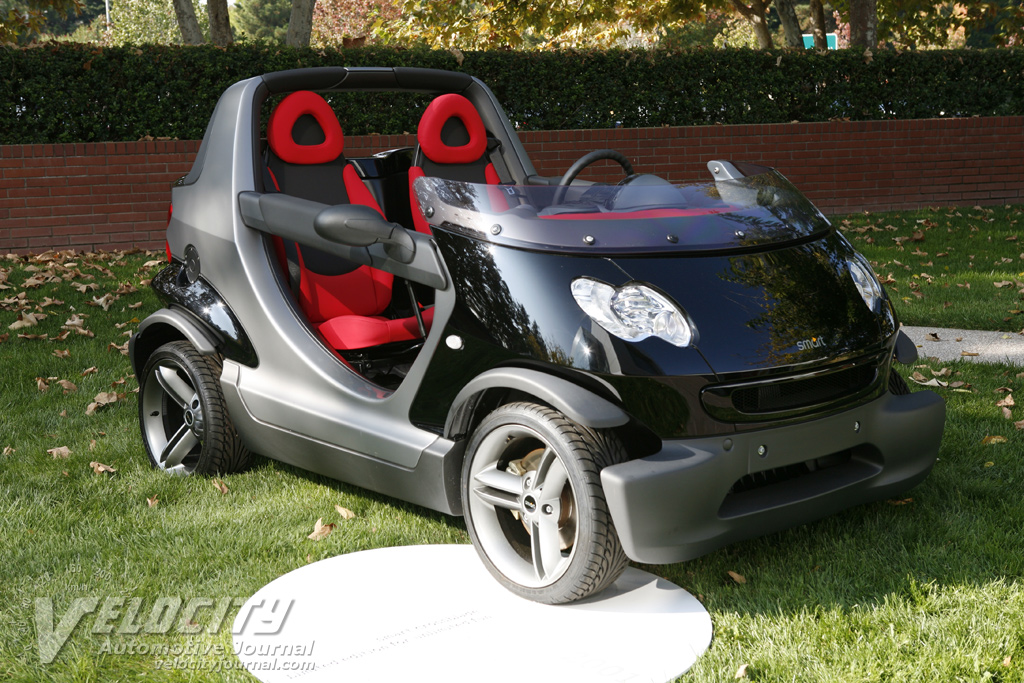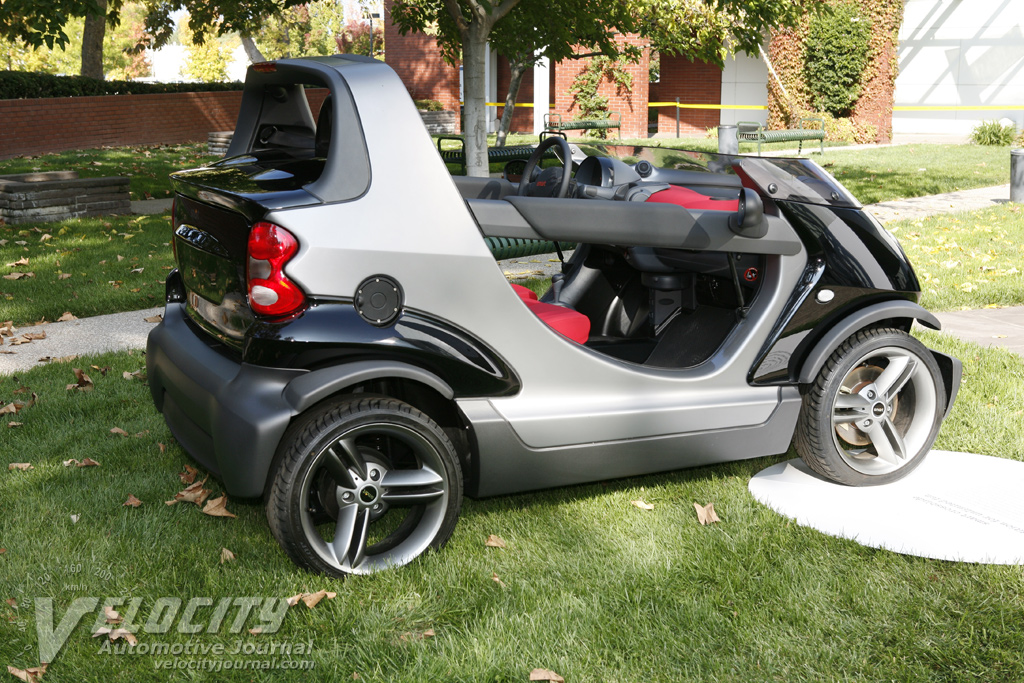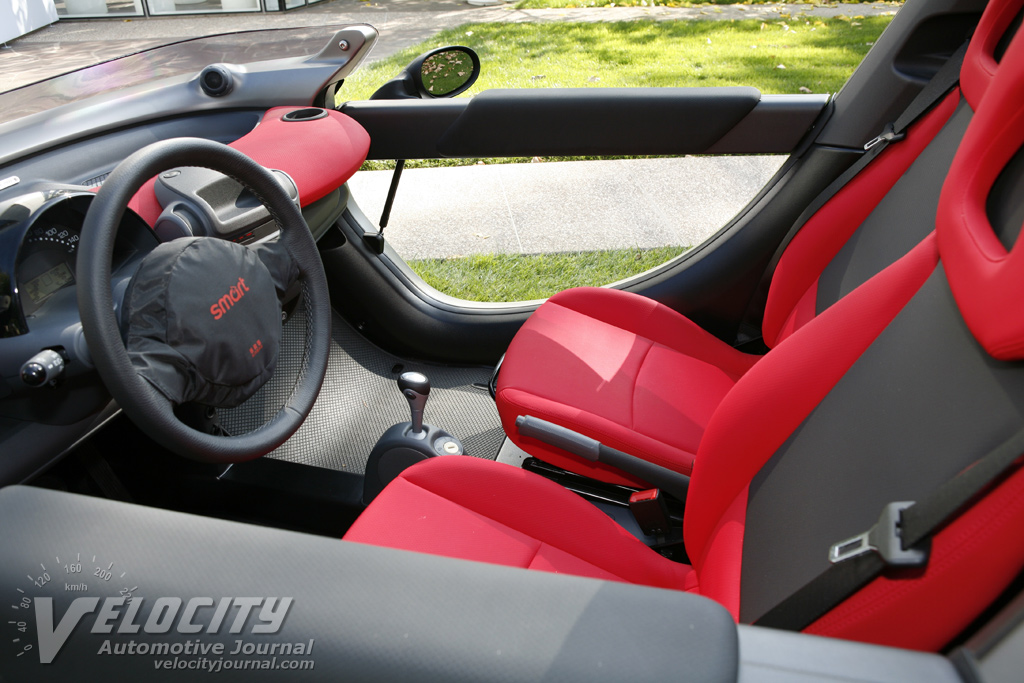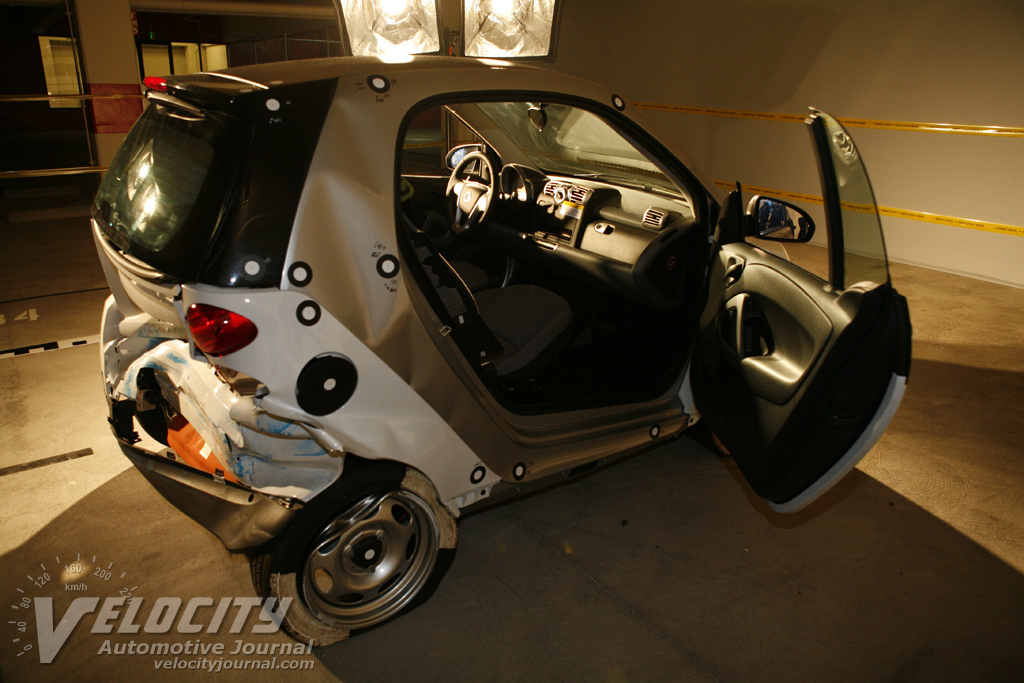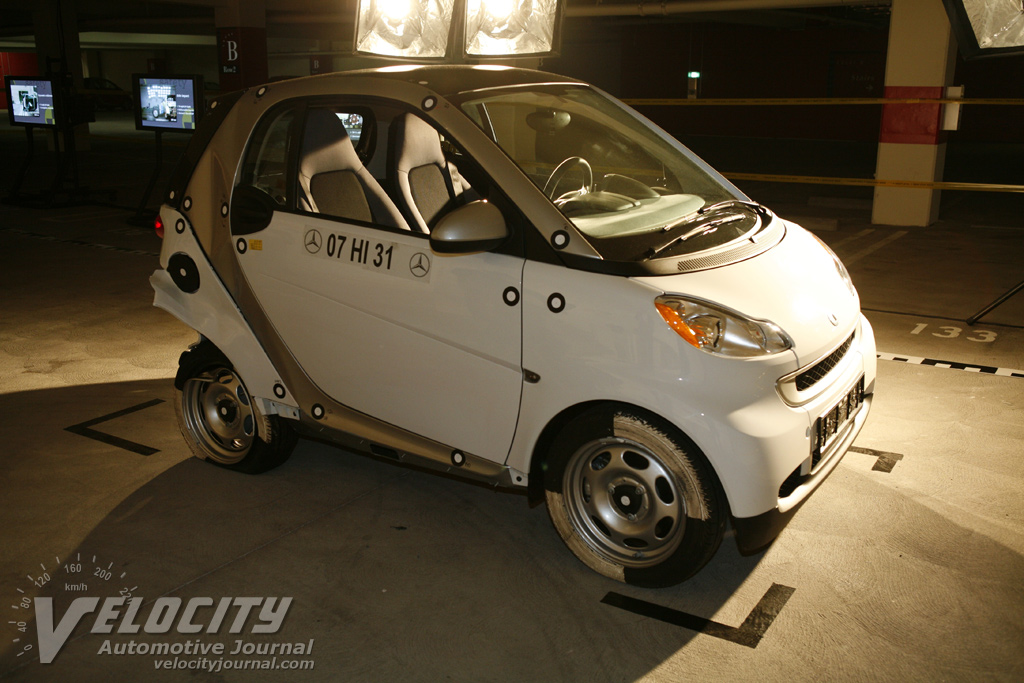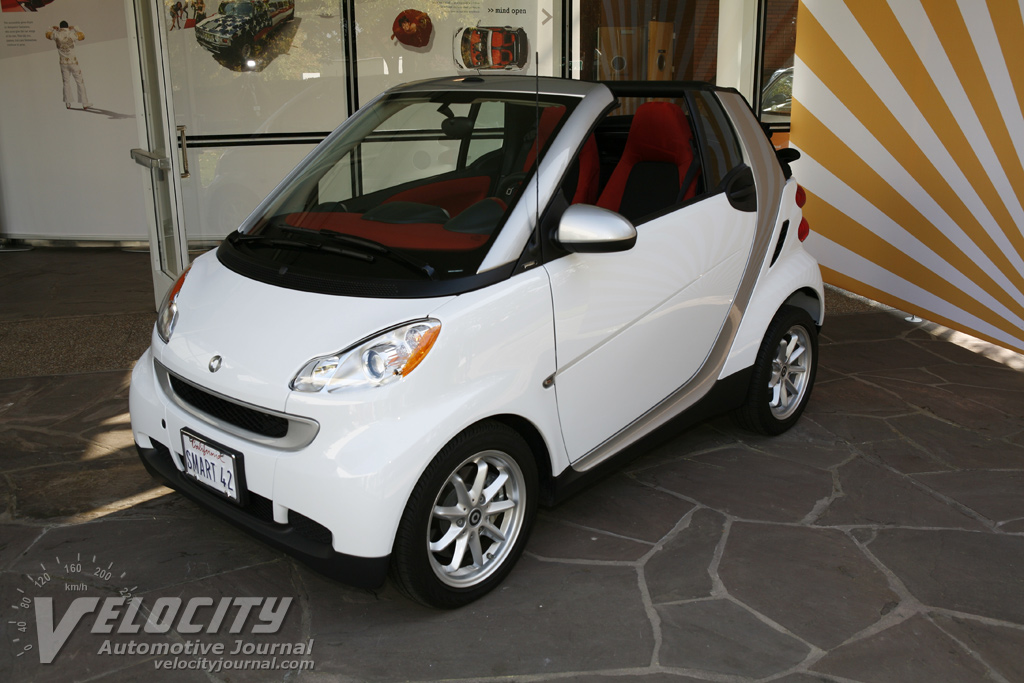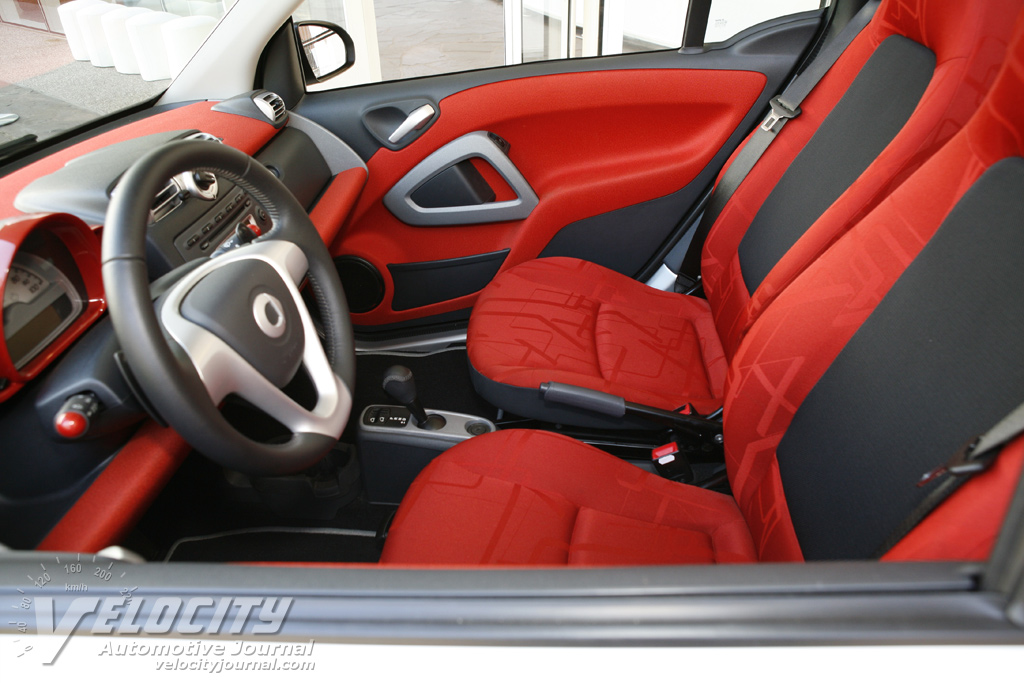2008 Smart fortwo
10/31/2007
Shahed Hussain
Smart has sold its tiny 2-seat fortwo city car in Europe since 1998, with total sales of over 770,000 vehicles. In the densely packed environs of European cities, the fortwo's compact dimensions simplify parking concerns, while its frugal powertrain keeps fuel consumption to a minimum. On this side of the Atlantic, smart plans to market the fortwo to urban customers in cities such as New York, Chicago, and San Francisco. Eventually, smart intends to sell the fortwo in 50 metropolitan areas throughout the US.
Compared to other subcompact cars, the smart fortwo stands out as a 2-seat subcompact designed specifically for congested urban environments. Unlike most other small cars, the fortwo has its engine in back, driving the rear wheels. At 106.1" long, the fortwo is almost 46" shorter than a subcompact Toyota Yaris Liftback, while its 61.38" width is more than 5" narrower than the Toyota. A short wheelbase of only 73.5" is possible because the fortwo has no rear seats. Above the engine is a small cargo compartment accessible from the front seats, or via the rear hatch. Despite the rear-mounted engine, the fortwo has no cargo stowage space underneath its sloping hood.
As an around town runabout, the fortwo is an intriguing choice for recreation vehicle and motorhome owners. Since it can be easily towed behind these vehicles without a trailer, or actually stowed inside some larger motorhomes, the fortwo offers some unique advantages not available in other vehicles. Retirees living in gated communities could substitute the fortwo for golf carts to drive around their subdivisions, while still having a completely street legal vehicle for errands or to visit friends and relatives.
Smart offers the fortwo as a coupe and a convertible (cabriolet). The coupe is available in the base pure or more upscale passion trim levels, while the cabriolet is equipped similarly to the passion coupe. Pricing starts at $11,590 for the fortwo pure, while the passion coupe is an extra $2,000. The cabriolet, with its folding soft top has a base price of $16,590. An available Comfort Package ($850) includes power steering and heated leather seats. Although the fortwo Cabriolet will appeal to some, it is too expensive to be more than a niche vehicle. We would select the smart fortwo passion model, and add the optional power steering ($450), heated seats ($220), tachometer & clock ($120), premium audio system ($350), and fog lamps ($110). The grand total for a smart fortwo equipped per our preferences would add up to $14,840 (without destination charges). The same amount of cash will buy a nicely equipped Hyundai Accent, Chevrolet Aveo5 or Toyota Yaris; which explains why smart is marketing the fortwo almost exclusively to urban citizens, who must factor in parking hassles into their car purchase decision.
All smart models are powered by a 1.0L inline-3 coupled to a 5-speed automated manual transmission. With 70-bhp @ 5,800 RPM and 68 lb.-ft. @ 4,500 RPM, the fortwo's engine has similar power to subcompact cars from the 1970s. With its curb weight of 1,808 lbs., the fortwo weighs almost 500 lbs. less than a Toyota Yaris, so the power-to-weight ratio of 25.8 lbs./bhp isn't much worse than the 21.9 lbs./bhp of the Yaris. Like other German icons like the Porsche 911 and original VW Beetle, the smart fortwo has its engine mounted in the back, driving the rear wheels. This layout ensures excellent traction on slippery roads, superior to that of similar front-wheel drive vehicles.
The fortwo's somewhat spartan interior is a collection of simple shapes and textures. The ignition key is conveniently located on the center console behind the shift lever. Firmly padded cloth seats have manual adjustments for reach and rake; seat bolsters provide adequate support to keep passengers snugly in place. Although the upholstery fabric appears durable, it feels slightly slippery to the touch. Door panels and dashboard are covered in a combination of fabric and dark gray plastic trim. Although the speedometer is directly in front of the driver, the optional tachometer and clock are inconveniently mounted on the dashboard above the HVAC controls. We aren't sure why the tachometer isn't in the main instrument binnacle, or why the clock couldn't be integrated into the audio system.
Behind the seats, the fortwo offers up to 7.8 cu. ft. of storage space or up to 12 cu. ft. if you don't mind obstructing the rear window. A small suitcase or a few duffle bags will fit in the luggage area. A trip to the supermarket or department store won't cause second thoughts, but a weekend journey is really not its intended mission.
We understand that the smart fortwo isn't intended for automotive enthusiasts, so we tried to compare its abilities within its context as a city car. At 70 MPH, the fortwo is reasonably stable on the highway, although we can't comment on its behavior in crosswinds. Engine and road noise are subjectively comparable to typical economy sedans. In 5th gear, the inline-3 struggles to go up moderate inclines with air conditioning on; a quick downshift via the paddle shifter, or the center console shift lever into 4th gear gets the engine back in its powerband. On urban roads, the fortwo has enough power to easily keep up with traffic; off-the-line acceleration is more than adequate to scoot ahead at a stoplight. The 5-speed transmission jerks slightly as the automatic clutch shifts between gears, which can be disconcerting for drivers accustomed to conventional torque converter automatics.
Smart claims a 0-60 MPH time of 12.8 seconds for the fortwo; just fast enough to merge onto the highway without undue panic. Top speed is limited to 90 MPH, which is more than adequate, as we never exceeded 80 MPH during our test drive. The 2008 EPA mileage estimates are 33/41 MPG (city/hwy.) for all models of the fortwo. For comparison, the Honda Fit achieves 28/34 MPG (city/hwy.), while the Toyota Yaris gets 29/36 MPG (city/hwy.), when both models are equipped with a 5-speed manual transmission.
Partly due to its short 73.5" wheelbase, the smart fortwo is an entertaining drive on city streets. With its sharp and direct steering, the fortwo can slip in and out of dense urban traffic with ease. As a result of its RWD layout, the fortwo has no torque steer, often noticeable in front-wheel drive subcompacts. With its independent front and DeDion semi-independent rear suspension, the fortwo's ride quality is comfortable, but damped firmly enough to keep excessive body motion under control.
Smart equips the fortwo with 11.0" diameter front discs and 8" diameter rear drum brakes; ESP (electronic stability program), ABS, traction control, and brake assist are standard. Standard 15-inch alloy wheels (steel wheels for the fortwo pure) are shod with 155/60R15 (front) and 175/55R15 (rear) tires. Despite all the latest technology, the disc/drum setup results in a spongy pedal with little feel. The first inch of pedal travel has minimal effect; a firm push is needed to really slow down. It took some time to adapt to the nonlinear brakes, but we think that most customers will get become accustomed to it. Passive safety features include dual front airbags and side/thorax airbags. Smart also touts its "tridion" safety cell, comprised of a steel cage that encloses both occupants. In addition, the fortwo's short wheelbase ensures a stiff body structure to limit intrusion into the passenger compartment during a side impact collision.
The smart fortwo is in a class by itself as probably the smallest street legal car sold in the US. Yet the base fortwo pure is priced comparably to the Toyota Yaris Liftback, and slightly higher than the Hyundai Accent GS, which makes it a tough sell for the mainstream economy car buyer. Smart understands this marketing dilemma, and has intentionally focused its efforts to appeal to prospective customers who will appreciate the fortwo's compact dimensions, nimble handling, and frugal fuel consumption. For these buyers, the fortwo fits the bill perfectly.

